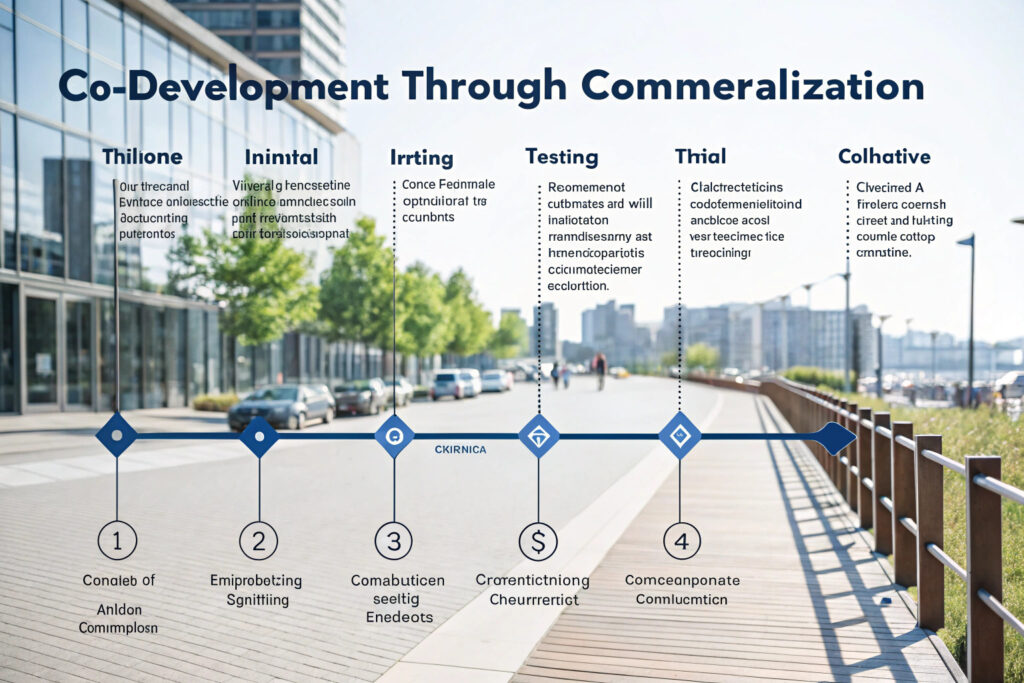The landscape of fabric mask innovation has evolved beyond simple buyer-supplier transactions to collaborative partnerships that leverage mutual expertise. Co-development transforms suppliers from mere manufacturers into strategic innovation partners, combining your market knowledge with their technical capabilities to create truly differentiated products. This approach accelerates innovation while distributing development costs and risks.
You can partner with suppliers for co-developed fabric mask innovations by identifying manufacturers with strong R&D capabilities, establishing clear intellectual property agreements, creating structured development processes, aligning business objectives, and building relationships based on transparency and mutual benefit. Successful co-development partnerships combine your market insights with suppliers' manufacturing expertise and material knowledge to create innovations neither party could develop independently.
The transition from transactional sourcing to co-development requires a fundamental shift in how both parties approach the relationship, moving from price negotiations to value creation conversations. The most successful partnerships create competitive advantages that are difficult for competitors to replicate quickly. Let's examine the specific strategies for establishing and maintaining productive co-development relationships.
What Supplier Qualifications Support Successful Co-Development?
Identifying the right manufacturing partners is the foundation of successful co-development relationships.

What R&D capabilities indicate co-development potential?
Suppliers with dedicated R&D departments and in-house prototyping facilities typically make better co-development partners than those focused solely on production. Look for manufacturers with material testing laboratories, pattern engineering expertise, and experience developing proprietary technologies. Our partners maintain teams of textile engineers, product designers, and material scientists who collaborate directly with clients on innovation projects.
How does manufacturing capability align with innovation goals?
Vertical integration and technical specialization enable suppliers to implement innovations more effectively. Manufacturers controlling multiple production stages (spinning, weaving, dyeing, finishing) can develop integrated solutions rather than working within component constraints. Our most successful co-development partnerships have been with vertically integrated manufacturers who can innovate across the entire production chain.
What Intellectual Property Frameworks Protect Both Parties?
Clear IP agreements are essential for co-development partnerships to thrive without constant legal concerns.

How should IP ownership be structured?
Background IP (pre-existing knowledge each party brings) should remain with the originating party, while foreground IP (developments during the partnership) can be jointly owned or allocated based on contribution. The most effective agreements specify exactly which innovations belong to each party and establish licensing terms for shared use. Our standard co-development agreement includes clear IP allocation matrices that prevent future disputes.
What about commercialization rights and revenue sharing?
Field-of-use limitations and territorial restrictions can allow both parties to benefit from innovations without direct competition. Revenue sharing models might include royalty payments based on sales, reduced manufacturing costs in exchange for IP access, or joint venture structures for specific innovations. Our most successful arrangement involves graduated royalty rates that increase with sales volume, aligning incentives for market success.
What Development Processes Facilitate Effective Collaboration?
Structured development processes ensure co-development projects progress efficiently with clear milestones.

How should development phases be organized?
Stage-gate processes with clear deliverables at each phase prevent projects from drifting without direction. Typical phases include: concept development, technical feasibility, prototyping, testing, and commercialization. Each gate should involve representatives from both organizations and clear go/no-go criteria. Our co-development framework includes 5 phases with specific deliverables and decision points at each transition.
What communication protocols support collaboration?
Regular innovation meetings (weekly during active development), shared digital workspaces, and clear escalation paths ensure issues are addressed promptly. The most effective collaborations establish both formal reporting structures and informal communication channels. Our partnerships include monthly executive reviews, weekly technical team meetings, and always-available messaging for quick questions.
What Resources Should Each Party Contribute?
Successful co-development requires appropriate resource commitment from both organizations.

What typically constitutes a fair resource contribution?
Brands typically contribute market intelligence, consumer insights, and design direction, while manufacturers provide technical expertise, production capabilities, and material knowledge. Financial investments might be shared based on expected benefit, with manufacturers often absorbing development costs in exchange for exclusive production rights. Our balanced approach shares development costs based on projected benefit distribution.
How should teams be structured for optimal collaboration?
Dedicated innovation teams with clear leadership from both organizations prevent diffusion of responsibility. These teams should include cross-functional representatives from R&D, manufacturing, marketing, and business development. Our co-development projects are led by joint innovation committees with decision-making authority from both organizations.
What Success Metrics Ensure Mutual Benefit?
Establishing clear success metrics aligns expectations and demonstrates partnership value.

How should innovation outcomes be measured?
Beyond traditional financial metrics, consider innovation-specific KPIs like time-to-market reduction, development cost savings, product performance improvements, and patent filings. These metrics demonstrate the strategic value beyond immediate financial returns. Our co-development scorecard includes both quantitative metrics and qualitative assessments of the partnership health.
What about relationship quality indicators?
Partnership satisfaction surveys, conflict resolution efficiency, and continued engagement willingness provide insights into the relationship's long-term viability. The most successful partnerships demonstrate increasing trust and deeper collaboration over time. We conduct quarterly partnership health assessments that have improved relationship satisfaction by 40% in our longest-running collaborations.
How Can Risks Be Mitigated in Co-Development Partnerships?
Proactive risk management prevents disputes and keeps innovation projects on track.

What are the most common co-development risks?
Misaligned expectations, unclear decision rights, changing priorities, and personnel changes represent the most frequent challenges in co-development partnerships. Establishing clear governance structures and communication protocols from the beginning mitigates these risks. Our partnership agreements include specific provisions for handling each of these common scenarios.
How can intellectual property risks be managed?
Confidentiality agreements, clear IP allocation, and non-compete provisions protect both parties' interests while allowing open collaboration. Regular IP reviews ensure compliance and address any emerging concerns. Our IP management process includes quarterly reviews that have prevented several potential disputes before they escalated.
Conclusion
Partnering with suppliers for co-developed fabric mask innovations requires a strategic approach that transforms traditional buyer-supplier relationships into collaborative partnerships. Success depends on selecting the right manufacturing partners, establishing clear IP frameworks, implementing structured development processes, allocating appropriate resources, defining mutual success metrics, and proactively managing risks. The most successful collaborations create innovations that provide competitive advantages while strengthening the strategic relationship between both organizations.
The investment in building co-development partnerships delivers returns through accelerated innovation, reduced development costs, and products better aligned with both manufacturing capabilities and market needs. As the fabric mask market continues evolving, co-development represents a strategic approach to maintaining leadership in an increasingly competitive landscape.
Ready to explore co-development partnerships for your next fabric mask innovations? Contact our Business Director, Elaine, at elaine@fumaoclothing.com to discuss our co-development capabilities and how we can collaborate to create the next generation of fabric mask technologies. We'll share examples of successful partnerships and our approach to mutual innovation.


























